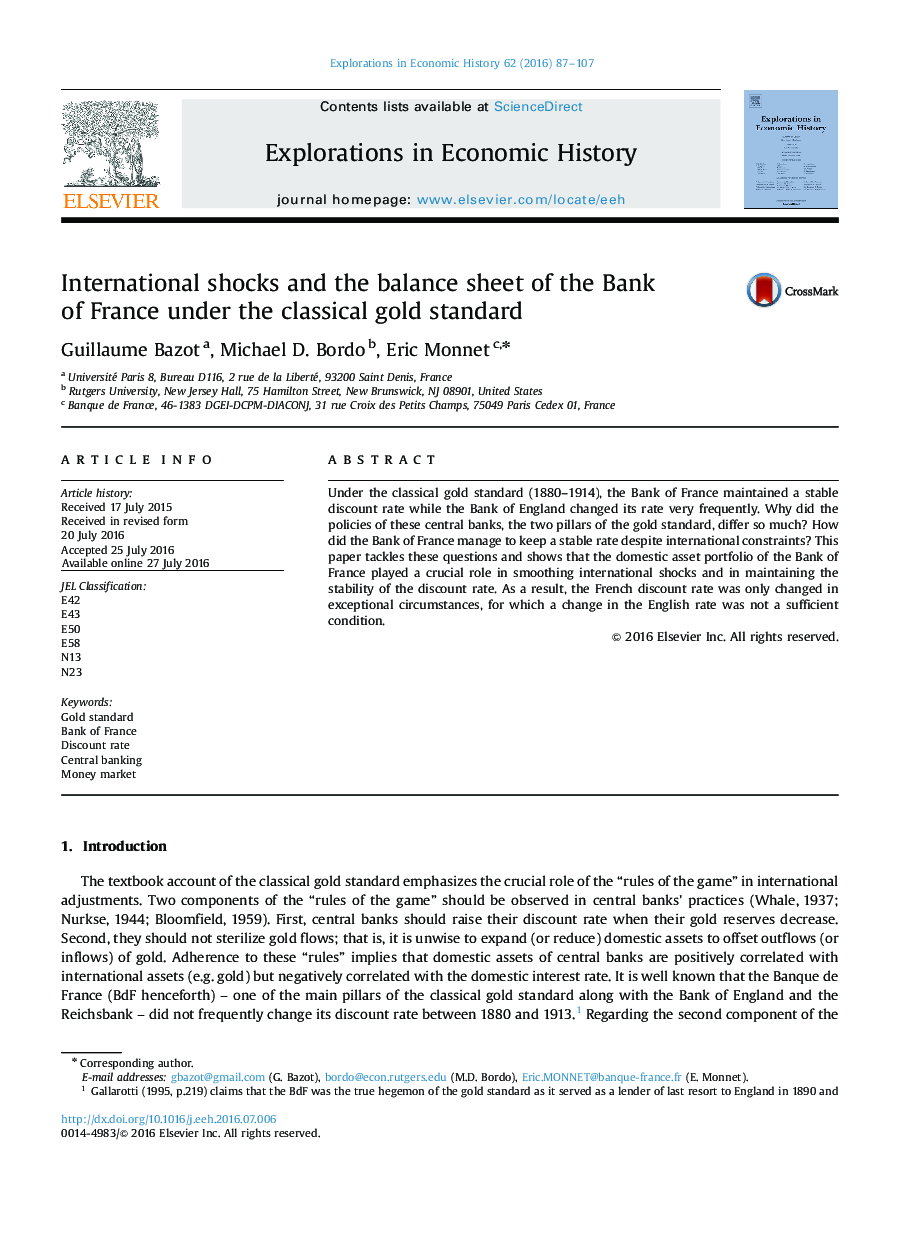| Article ID | Journal | Published Year | Pages | File Type |
|---|---|---|---|---|
| 5068650 | Explorations in Economic History | 2016 | 21 Pages |
Abstract
Under the classical gold standard (1880-1914), the Bank of France maintained a stable discount rate while the Bank of England changed its rate very frequently. Why did the policies of these central banks, the two pillars of the gold standard, differ so much? How did the Bank of France manage to keep a stable rate despite international constraints? This paper tackles these questions and shows that the domestic asset portfolio of the Bank of France played a crucial role in smoothing international shocks and in maintaining the stability of the discount rate. As a result, the French discount rate was only changed in exceptional circumstances, for which a change in the English rate was not a sufficient condition.
Related Topics
Social Sciences and Humanities
Arts and Humanities
History
Authors
Guillaume Bazot, Michael D. Bordo, Eric Monnet,
